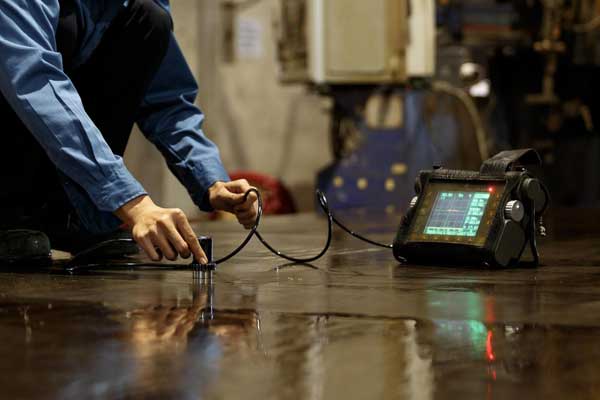The use of ultrasonic flaw detectors or ultrasonic thickness gauges for nondestructive testing has a long history. The earliest reports proving the ability to nondestructively determine properties driven by liquid crystal waves began to accumulate in the mid-1940s; its significant work was done on nondestructive methods based on the piezoelectric effect and their application to various industries.
One of the first contributions that clearly described ultrasonic testing and its properties was made by Dr. Floyd Firestone on May 27, 1940. He presented experiments conducted with water under pressure and permanent magnet bipolar transducers.
The impact of solitons, surfaces, liquids, and sonic generation points to be investigated for an improved understanding of ultrasonic science at a new level. Their potential applications to nano-transducers deserve further attention. Ultra-sensitive transducers working based on piezoelectricity can sense solid objects or material samples and hypersensitive measurements of liquid samples.

What’s the Advantage of Ultrasonic Testing?
- Cost-effective: Ultrasonic testing is the least expensive of all NDT methods.
- No radiation exposure: Ultrasonic technology does not require ionizing radiation or toxic chemicals like liquid penetrant or radiology. It is free of radioactive elements, and no harmful chemical residues are released into the environment during use.
- No physical contact with the test object: Ultrasonic technology does not require direct contact with the test object or surface. The operator does not need to wear protective clothing, gloves, or masks.
- Quick response time: Ultrasonic testing is faster than other NDT methods such as liquid penetrant and radiology tests. This is because it is shorter than other NDT methods in processing time and signal detection time. This enables faster results and can also reduce the cost of production by reducing the number of inspections performed by an operator or technician.
- Safe and clean environment: No hazardous materials are released into the atmosphere during the use of ultrasonic equipment, which enhances its safety features compared to other NDT methods like liquid penetrant and radiology techniques which require hazardous materials to be used in a laboratory environment to avoid any harmful environmental impact on the surrounding area.
- Durability: Ultrasonic testing equipment is designed for ruggedness, high-performance operation, and long-term use. It is also designed to resist harsh environments, high temperatures, dust, and vibration.
- Ease of operation: Ultrasonic equipment is easy to operate by personnel who are not trained in ultrasonic technology or NDT. Operators can quickly learn how to operate an ultrasonic device and have minimal experience with the system.
- Reliability: Ultrasonic technology has a proven track record of reliable and effective NDT techniques that have been used for many years in industries such as oil and gas, metals, plastics, pharmaceuticals, food processing, and other sectors for inspection of product surfaces and other components.
- Test object not requiring any special handling or preparation: The test object does not require any special handling or preparation before testing. This means that no special equipment is needed before using the ultrasonic device for inspection purposes, and no hazardous materials are required during the investigation process. The only thing the test object needs is a surface condition similar to the test object to be inspected.
- There is no limit on the number of test objects that can be tested without any adverse effect on the ultrasonic equipment: The ultrasonic device does not require any special equipment or extra parts for handling. It does not depend on other equipment to function. It does not require any special operator training, nor does it need trained personnel in the field of ultrasonic testing specialized in NDT technology for the device to operate effectively.
NDT-KITS is aware of all the facts about its implementation and readiness on the market. In contrast, they are facing great competition, and due to this reason, they have opted for ultrasonic testing. This is primarily because it provides cost-effective methodologies and speedy test cases, which can be customized according to individual or corporate needs.
Ultrasonic testing provides precisely what is needed and is on top of this spectrum. Its reliability allows builders to predict the strength, compression efficiency, coupling capacity, and ductility when designing/building.

